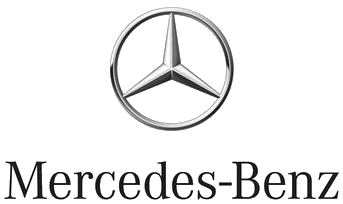ask on japan - Everything you need to know
Japan Listeni/dʒəˈpæn/ (Japanese: 日本 Nippon or Nihon; formally 日本国 About this sound Nippon-koku or Nihon-koku, literally "[the] State of Japan") is an island nation in East Asia. Located in the Pacific Ocean, it lies to the east of the Sea of Japan, China, North Korea, South Korea and Russia, stretching from the Sea of Okhotsk in the north to the East China Sea and Taiwan in the south. The characters that make up Japan's name mean "sun-origin", which is why Japan is often referred to as the "Land of the Rising Sun".
Japan is a stratovolcanic archipelago of 6,852 islands. The four largest islands are Honshu, Hokkaido, Kyushu, and Shikoku, which together comprise about ninety-seven percent of Japan's land area. Japan has the world's tenth-largest population, with over 126 million people. Honshū's Greater Tokyo Area, which includes the de facto capital of Tokyo and several surrounding prefectures, is the largest metropolitan area in the world, with over 30 million residents.
Archaeological research indicates that people lived in Japan as early as the Upper Paleolithic period. The first written mention of Japan is in Chinese history texts from the 1st century AD. Influence from other regions, mainly Imperial China, followed by periods of isolation, later from Western European influence, has characterized Japan's history. From the 12th century until 1868, Japan was ruled by successive feudal military shoguns in the name of the Emperor. Japan entered into a long period of isolation in the early 17th century, which was only ended in 1853 when a United States fleet pressured Japan to open to the West. Nearly two decades of internal conflict and insurrection followed before the Meiji Emperor was restored as head of state in 1868 and the Empire of Japan was proclaimed, with the Emperor as a divine symbol of the nation. In the late 19th and early 20th centuries, victories in the First Sino-Japanese War, the Russo-Japanese War and World War I allowed Japan to expand its empire during a period of increasing militarism. The Second Sino-Japanese War of 1937 expanded into part of World War II in 1941, which came to an end in 1945 following the atomic bombings of Hiroshima and Nagasaki. Since adopting its revised constitution in 1947, Japan has maintained a unitary constitutional monarchy with an emperor and an elected legislature called the National Diet.
Japan is a member of the UN, the G7, the G8, the G20. A major economic and political power,[2] Japan is a developed country and has the world's third-largest economy by nominal GDP and the world's fourth-largest economy by purchasing power parity. It is also the world's fifth-largest exporter and fifth-largest importer. Although Japan has officially renounced its right to declare war, it maintains a modern military with the world's eighth largest military budget,[10] used for self-defense and peacekeeping roles. Japan ranks high in metrics of prosperity such as the Human Development Index, with the Japanese population enjoying the highest life expectancy of any country in the world and the infant mortality rate being the third lowest globally.
Japan is a constitutional monarchy where the power of the Emperor is very limited. As a ceremonial figurehead, he is defined by the constitution as "the symbol of the state and of the unity of the people." Power is held chiefly by the Prime Minister and other elected members of the Diet, while sovereignty is vested in the Japanese people.[53] Akihito is the current Emperor of Japan; Naruhito, Crown Prince of Japan, stands as next in line to the Chrysanthemum Throne.
Japan's legislative organ is the National Diet, a bicameral parliament. The Diet consists of a House of Representatives with 480 seats, elected by popular vote every four years or when dissolved, and a House of Councillors of 242 seats, whose popularly elected members serve six-year terms. There is universal suffrage for adults over 20 years of age,[2] with a secret ballot for all elected offices.[53] The Diet is dominated by the social liberal Democratic Party of Japan and the conservative Liberal Democratic Party (LDP). The LDP has enjoyed near continuous electoral success since 1955, except for a brief 11 month period between 1993 and 1994, and from 2009 to 2012. It holds 294 seats in the lower house and 83 seats in the upper house.
The Prime Minister of Japan is the head of government and is appointed by the Emperor after being designated by the Diet from among its members. The Prime Minister is the head of the Cabinet, and he appoints and dismisses the Ministers of State. Following the LDP's landslide victory in the 2012 general election, Shinzō Abe replaced Yoshihiko Noda as the Prime Minister on December 26, 2012[54] and became the country's sixth prime minister to be sworn in 6 years. Although the Prime Minister is formally appointed by the Emperor, the Constitution of Japan explicitly requires the Emperor to appoint whoever is designated by the Diet.[53]
Historically influenced by Chinese law, the Japanese legal system developed independently during the Edo period through texts such as Kujikata Osadamegaki.[55] However, since the late 19th century the judicial system has been largely based on the civil law of Europe, notably Germany. For example, in 1896, the Japanese government established a civil code based on a draft of the German Bürgerliches Gesetzbuch; with post–World War II modifications, the code remains in effect.[56] Statutory law originates in Japan's legislature and has the rubber stamp of the Emperor. The Constitution requires that the Emperor promulgate legislation passed by the Diet, without specifically giving him the power to oppose legislation.[53] Japan's court system is divided into four basic tiers: the Supreme Court and three levels of lower courts.[57] The main body of Japanese statutory law is called the Six Codes.
Japan is a member of the G8, APEC, and "ASEAN Plus Three", and is a participant in the East Asia Summit. Japan signed a security pact with Australia in March 2007[59] and with India in October 2008.[60] It is the world's third largest donor of official development assistance after the United States and France, donating US$9.48 billion in 2009.[61]
Japan has close economic and military relations with the United States; the US-Japan security alliance acts as the cornerstone of the nation's foreign policy.[62] A member state of the United Nations since 1956, Japan has served as a non-permanent Security Council member for a total of 20 years, most recently for 2009 and 2010. It is one of the G4 nations seeking permanent membership in the Security Council.[63]
Japan is engaged in several territorial disputes with its neighbors: with Russia over the South Kuril Islands, with South Korea over the Liancourt Rocks, with China and Taiwan over the Senkaku Islands, and with China over the EEZ around Okinotorishima.[64] Japan also faces an ongoing dispute with North Korea over the latter's abduction of Japanese citizens and its nuclear weapons and missile program (see also Six-party talks).[65]
Japan maintains one of the largest military budgets of any country in the world.[66] Japan contributed non-combatant troops to the Iraq War but subsequently withdrew its forces.[67] The Japan Maritime Self-Defense Force (JMSDF) is a regular participant in RIMPAC maritime exercises.[68]
Japan's military (the Japan Self-Defense Forces) is restricted by Article 9 of the Japanese Constitution, which renounces Japan's right to declare war or use military force in international disputes. Accordingly Japan's Self-Defence force is a usual military that has never fired shots outside Japan.[69] It is governed by the Ministry of Defense, and primarily consists of the Japan Ground Self-Defense Force (JGSDF), the Japan Maritime Self-Defense Force (JMSDF) and the Japan Air Self-Defense Force (JASDF). The forces have been recently used in peacekeeping operations; the deployment of troops to Iraq marked the first overseas use of Japan's military since World War II.[67] Japan Business Federation has called on the government to lift the ban on arms exports so that Japan can join multinational projects such as the Joint Strike Fighter.
In May 2014 Prime Minister Shinzō Abe said Japan wanted to shed the passiveness it has maintained since the end of World War II and take more responsibility for regional security. He said Japan wanted to play a key role and offered neighboring countries Japan's support





.jpg)




.svg.png)



















